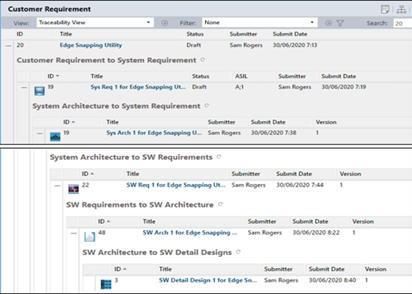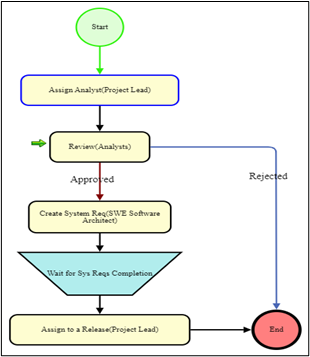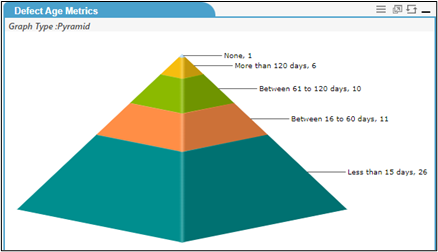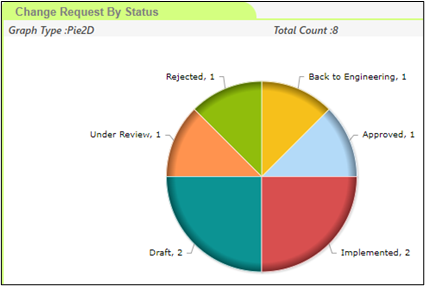Kovair Solution for ASPICE & ISO 26262 Compliance
Software development in the automotive industry demands software designed for compliance.
Kovair Automotive solution is designed and created ground up, having features and functionalities that adheres to
safety-critical regulations in automotive product development enabling extended capabilities of sufficing to
safety critical requirements as per the business needs of the organizations.
The Kovair Automotive solution provides a unified platform for the analysts and
engineering teams to develop safety-critical automotive products, speeding up the time to market with pre-defined
templates complying to the standards of Automotive SPICE (ASPICE) and ISO 26262 in a comprehensive architectural
model. The solution is designed on a flexible framework such that if required it can be extended to accommodate
any additional configurations that an organization may need to add to the solution to meet any of their specific
business requirements.
Highlights
- Facilitate faster development and delivery of products for automotive industry.
- Streamline functional safety compliance capabilities adhering to ASPICE and ISO 26262
- Templatized Automotive Solution compliant to ASPICE® and ISO 26262
- Help in managing complex projects with enhanced tool quality, reduced miscommunications, and increased customer satisfaction.
- Efficiently plan, track, and manage administrative and project tasks using Task Scheduler, Tasks and Timesheet Management
- Enable transparency in processes and enforce process quality with a Task Based workflow.
- Manage HARA with automated ASIL calculation and coverage for safety requirements engineering.
- Monitor and manage failure modes, risks, and CAPA in relation to linked artifacts.
- Ensure alignment across all stakeholders, development teams and suppliers through management of digital and traceable work products.
- Integrate with more than 110+ tools across various areas of operation like ALM, PPM, PLM, ERP, CRM, etc.
- Provide deeper insights into the development processes through built-in reporting and dashboards.


Business Benefits of Kovair Automotive ALM Solution
- Maximizes reliability and reduce time to market with a defined scope and synergy with requirements
- Accelerate Functional Safety compliance for Automotive SPICE and ISO 26262 with an integrated, 100% browser-based collaborative platform and task-based workflow.
- Gain complete visibility for the entire development lifecycle and simplify decision-making with end-to-end traceability, real-time customizable reports & dashboards.
- Make audit preparations hassle free and efficient at reduced costs through continuous compliance with Automotive SPICE and ISO 26262.
- Ensure alignment across product and engineering disciplines through ALM-PLM integration.
- Follow best practices through Kovair Omnibus’ codeless configurable built-in workflow engine and solution template for automotive regulatory compliance.
- Help minimizing implementation time with defined, pre-configured and exportable solution templates
Key Features for Automotive Solution
- Requirements Management
-
- Gather requirements from varied sources and manage those over a browser-based platform for analysis and change control.
- Track, manage and validate complex system requirements enabling the elimination of risks that crop up with document-based systems.
- Link high level customer requirements to more detailed hardware and software system requirements ensuring validation and verification before the releases.
- Ensure correctness of requirements through task-based workflow
- Kovair’s built in versioning and impact analysis capabilities help track the granular level of changes, compare changes between the versions and facilitate in performing proactive and reactive analysis.



- Test Management
-
- Enables defining of tests based on requirements, architecture, and designs.
- Manage traceability to test cases used for safety-critical testing
- Monitor test coverage in a real-time manner
- Execute Test Cases and automatically submit Defects on the failure of a Test execution.
- Ensure quality and customer satisfaction by reducing turn-around time using the mouse click configurable business rules and task-based workflow of Kovair ALM.




- Hazard Management
-
- Kovair’s HARA (Hazard & Risk Analysis) Management allows to define and manage hazards depending on various hazard types and risk triggering events.
- Increase the efficiency and precision of ASIL values by getting them calculated automatically using the calculated fields and business rule features of Kovair ALM
- Associate every hazard with appropriate controllability, exposure and severity based on which the system automatically calculates an ASIL number and an ASIL flag to that Hazard as per the standard ASIL Determination formula.
- Allows defining and linking of Safety Goals against each Hazard. From the Safety Goals, derive the Functional Safety Requirements. Decompose the Functional Safety Requirements into Technical Safety Requirements and finally define the Hardware and Software Safety Requirements.



- Release Management
-
- Kovair Release Management allows you to design and automate customized workflows for software development lifecycle
- Allows tracking the health of each of the Release in terms of whether the Releases are Finished Early, Finished Late, Days Left, Finished on Time along with the additional information displaying the actual number of days by which a Release is late, early, on time, etc.
- Provides capability to build and present summarized information like Total number of Requirements implemented, Total No. of Open Defects, No. of Blocking Defects, No. of Verified Defects, for each of the Releases.


- Quality Assurance & Testing for the Automotive Solution
-
- Kovair ALM comes with a wide range of customizable graphical and textual reports using the data from different artifacts used in the entire lifecycle phase.
- Reports can be included in the different gadgets in various visual dashboards with drill down capabilities to monitor the KPIs and provide support in the decision-making process.
- Leverage the benefit of custom template-based word reports for generation of any compliance related documents with the click of a button significantly reducing compliance audit time and costs.
- A Dashboard can be assigned to multiple users and at the same time a user can have access to multiple dashboards depending on the privileges and access rights.
- A Dashboard can be assigned to multiple users and at the same time a user can have access to multiple dashboards depending on the privileges and access rights.
- Each report has drill down capabilities to monitor the KPIs and provide support in the decision-making process.






Fig: Visual Monitoring through Reports and Dashboards
- Manage System Engineering & Software development teams in one single platform
-
- Maintain a common browser-based collaborative central platform to align mechanical engineering and software development teams involved throughout the automotive supply chain.
- Perform model-based engineering with ALM and PLM processes through integration between tools from different ALM functions and PLM tools like Aras Innovator, PTC Windchill & Siemens Teamcenter.
- Gain complete visibility across the product & application lifecycle through end-to-end traceability between requirements, development, testing, issue and defect management processes and all upstream and downstream artifacts, even across parallel streams of development.
- Connect team members from different functions, external suppliers, tools & processes.

Fig: Current Profile of Kovair Omnibus Integration


